Kayakimün: A Union of Strength and Identities on the Biobío River
Kayakimün: A Union of Strength and Identities on the Biobío River
Story by: Hayley Stuart
Photos by: Felipe Zanotti and riostorivers.org
Flowing through the lush foothills of the Chilean Andes, the crystal blue Biobío River is central to the Mapuche-Pehuenche cosmovision, or understanding of the universe, nourishing them with food, water, and newen (spiritual energy).
“For me the river is life and more than life. There are animals that live there, we bathe in it. We still have life here because we have clouds, we have rain, we have drinking water and we can live off it. Apart from life, the river for me is something essential, something that we have to protect.” - Ashley (Kayakimün participant)
The Biobío River was the first major river in Chile to be dammed. Once the most biologically diverse region in the nation, the Alto Biobío was irrevocably changed with the construction of the Ralco and Pangue dams built in 1994 and 2004. At first, five large dams were proposed, sparking the first socio-ecological movement in Chile’s history. The Mapuche-Pehuenche people, the ancestral stewards of the Biobío, were at the head of the fight since the dams threatened to relocate several communities and flood sacred burial grounds. By the end of the struggle, three of the five dams were rejected, but the two dams that were built were the biggest and most damaging of all of those proposed. Since then, a third dam was built and a fourth and fifth are proposed on the Biobío. The dams continue to impact communities today. Dam companies often change their water release schedule without warning, killing fishermen and locals, turning the river from a source of nourishment to a source of fear and real danger.
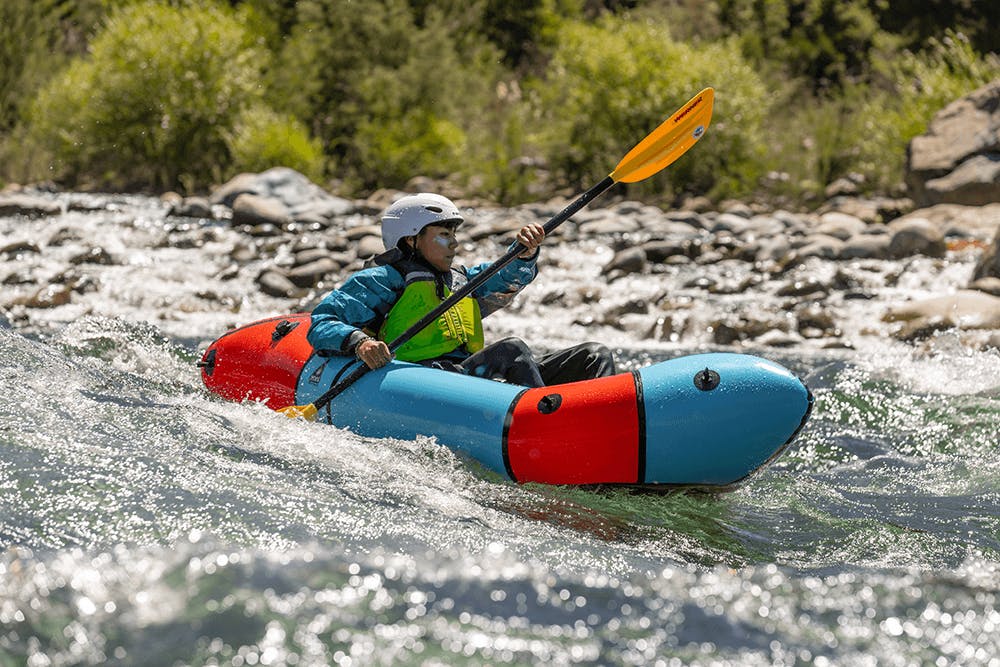
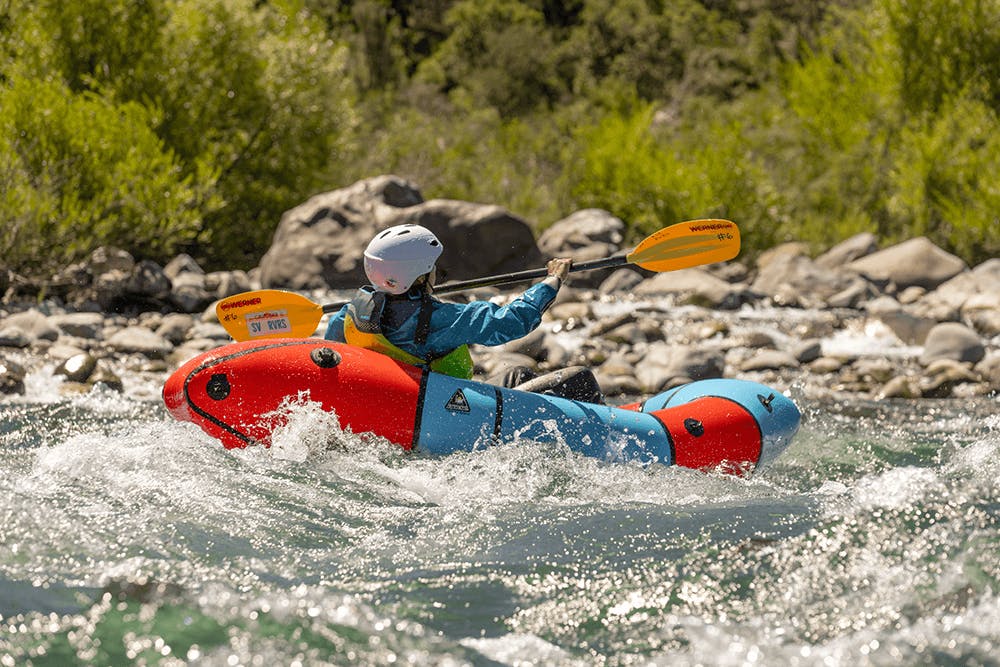
Whitewater paddling was something that mostly outsiders and foreigners would come to the region to do, until Fernanda Purran, a Ríos to Rivers trip leader who is now the director of Ríos to Rivers Chile, started an Indigenous, women-led rafting club called Malen Leubü (“Girls of the River” in Mapudungun, the Mapuche-Pehuenche language). Together, Mapuche women trained and competed together on the river, sharing their love for the river in a way that blended sport and tradition. The Malen Leubü club soon led to the formation of Kayakimün.
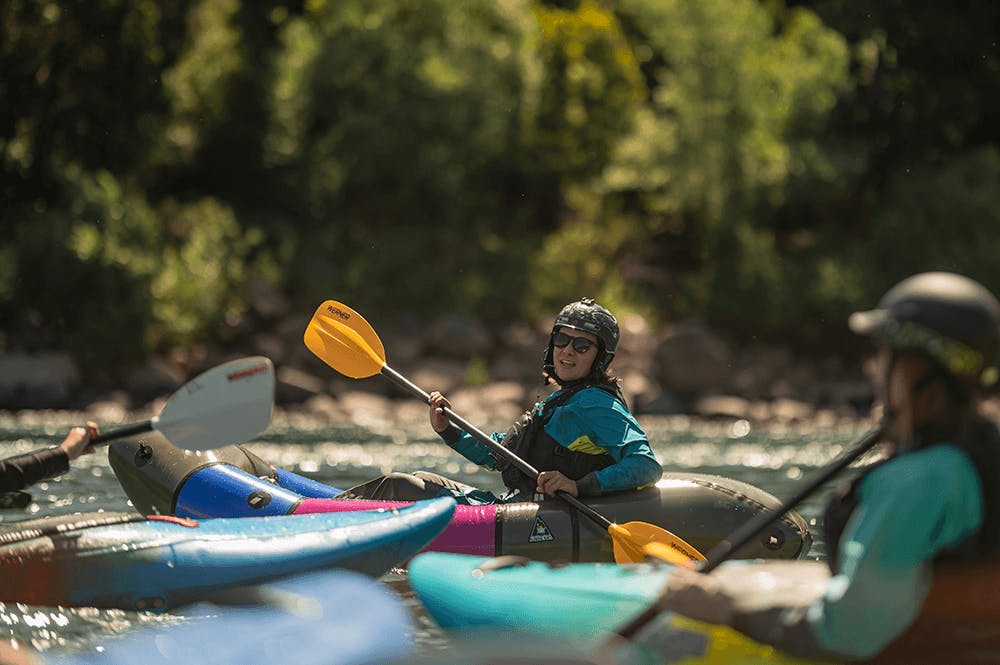
Kayakimün (“Kayak Knowledge” in Mapudungun) is a program born of Ríos to Rivers and Malen Leubü that brings the Indigenous communities of the Alto Biobío together through the river. It is almost entirely locally-led and facilitated, with families coming from around the basin to collaborate and support the team. During the program, the group camps on the Pirquinco Beach, which is the take out for the best Biobío River sections for teaching beginning packrafting, kayaking, rafting, and river safety skills. It has a beautiful sandy bank for roll practice and perfect eddies for learning peel-outs and ferries.
The students in this program (age 11-18) are at a formative time in their lives, and Kayakimün serves to offer more than kayaking and environmental training. For two weeks, students, local leaders, on-water instructors, cooks, and program volunteers live together at the campground, cooking and gathering around fires, sharing in workshops not only about stewardship and first aid, but also sexual health and identity and drug/alcohol awareness.
“At first everyone was a little shy, a little unmotivated to wake up early, but now they are motivated, they organize their own meetings, they are more self-sufficient. And they are more united too, and are able to express their feelings more effectively.” - Belen (Malen Leubü member and Kayakimün leader)
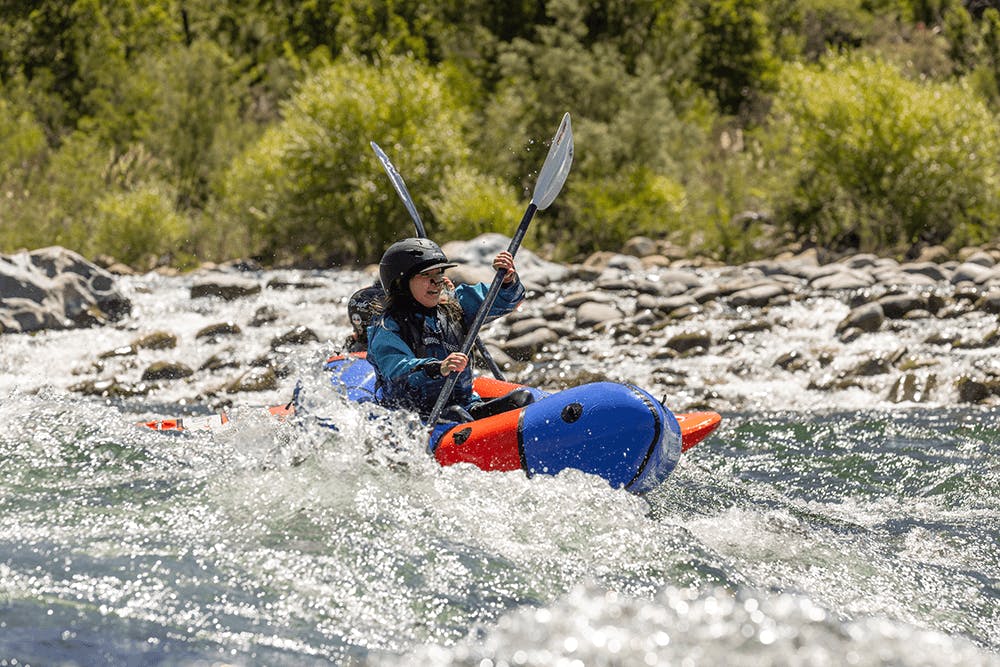
On the river, the kids learn techniques in kayaking, packrafting, and rafting. The different crafts open opportunities for local athletics, ecotourism development, and community river search and rescue skills development. Packrafts in particular offer a safer way for participants to descend the river long after the program when they don’t have their whitewater instructors around, but do have knowledge of basic river safety and how to safely navigate the local sections in teams that they and local leaders have learned at Kayakimün. Packrafts particularly make the river more accessible outside of annual courses for the participants, which is significant because, although the program is seeking more funding to increase the number of courses offered, Kayakimün currently only has funding to support a 2-week course with professional on-water instructors every summer and a couple weekends throughout the year. Because of the fast learning curve and ease of jumping back into a packraft if you flip, packrafts allow the Kayakimün team to practice the skills they have learned, progress their skills, and enjoy the river outside of formal courses.
“Kayakimün was a spark for us as an organization (Malen Leubü) to unite and motivate to continue, and to generate space for us and for kids to train. It’s beautiful to accompany them in the water. It’s very meaningful. A union of strength and identities. I identify myself as a participant in Kayakimün and also as a member of Malen Leubü and as an inhabitant of the Alto Biobío and as a woman too. So I find that empowering these types of organizations is super important to continue with this fight of raising awareness, to continue creating spaces so that these activities can happen so that they continue uniting and we continue learning. I see a very big future for Malen Leubü and for Kayakimün too”. - Belen (Malen Leubü member and Kayakimün leader)
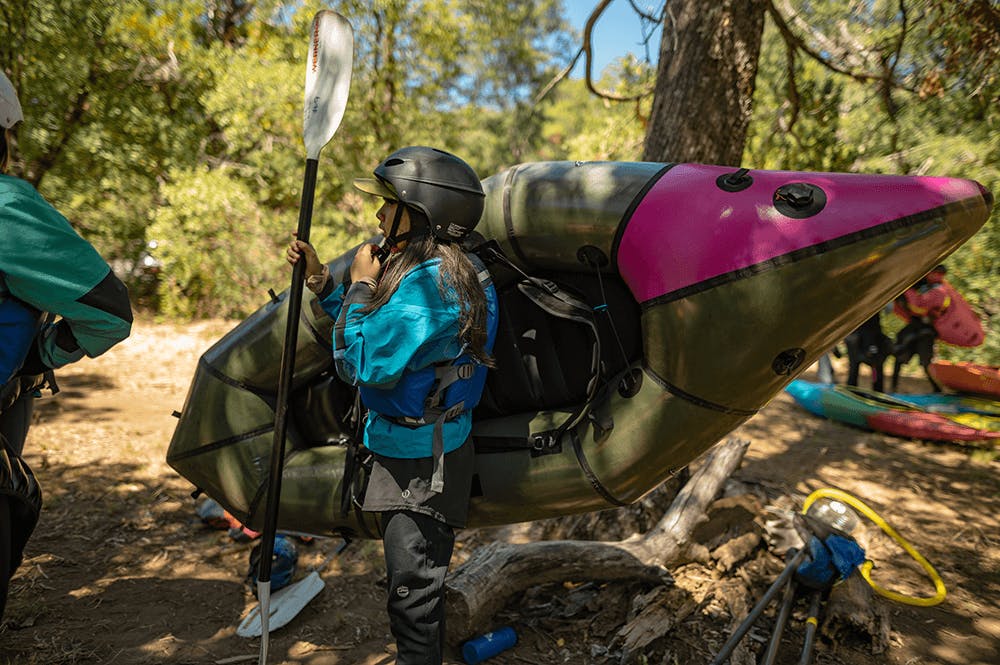
Learning to navigate the river is starting a healing process. It is a way for the community to come together and lift itself up, to become empowered with not only a new sport, but with a new family and a common goal of protecting and fighting for the river. By fighting with smiles, hugs, creativity, and paddle strokes, it honors the warrior nature of the Mapuche-Pehuenches in a positive way.
“I see this sport as the first step in a great staircase, because generally, the people who practice it have many resources, so they can be in the river without fear. It’s an elitist sport too. It’s not easy to acquire the gear to be able to practice it or the people to help you learn it. But to do it opens doors to networks of people who live off the river too. And through those networks you create links where you come to know the situation of different rivers and of the people who inhabit them. And the sport itself teaches you a lot. It teaches you to be perseverent, to observe things, to take care of yourself, to form good practice habits. It also provides a new perspective for people who were born, raised, and have spent their whole lives here, to be able to do this sport and see more of the world.” - Belen
The ultimate goal is for the community to build and safely run its own self-sufficient whitewater community and club. At Ríos to Rivers, we believe that healthy communities and healthy rivers create a positive feedback loop. You can’t have one without the other. When people fall in love with their river and see it in a new way, they want to protect it.
“For me (the river) it’s not just flowing water, but my great brother. It’s part of everything that we are in reality. We can’t be without it. We can’t live without it. If you cut it off, we are cut off too. If it’s in pain, we are in pain too. If it’s no longer here, we are gone too. So for me it’s that. My brother, my great brother.” - Belen
About Rios to Rivers
Founded in 2012, Ríos to Rivers programs have connected 234 underserved and indigenous students from 20 endangered river basins in seven countries. The programs have included students and community leaders from 21 indigenous nations. We envision a world in which youth who are intimately connected to their local waters and tribal communities are equipped to become the next generation of passionate leaders for healthy rivers and communities. Find out more at www.riostorivers.org.

